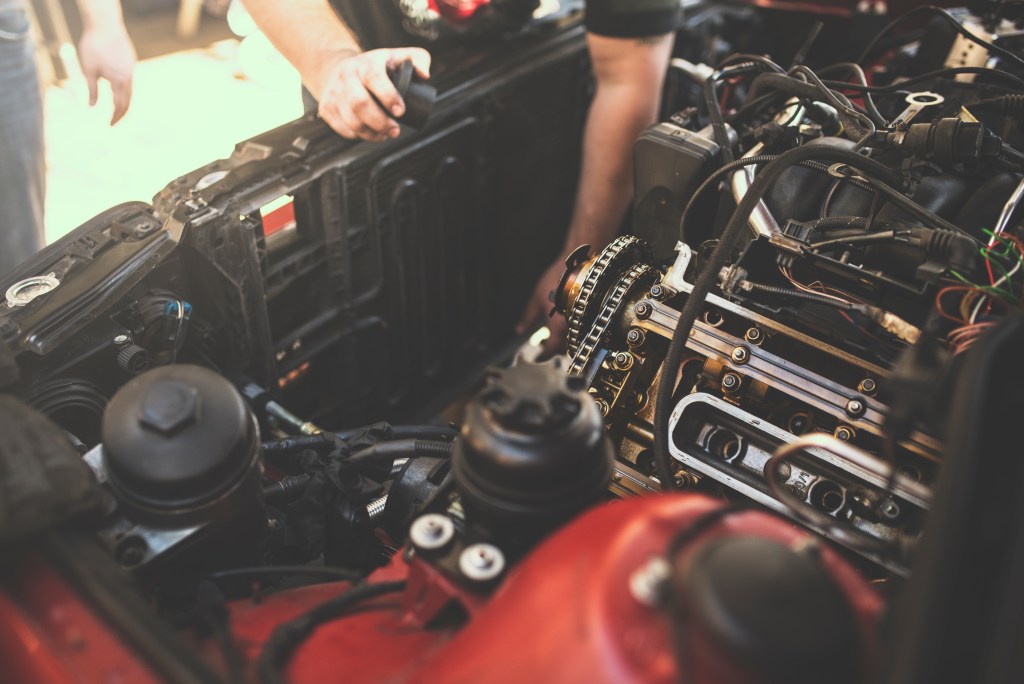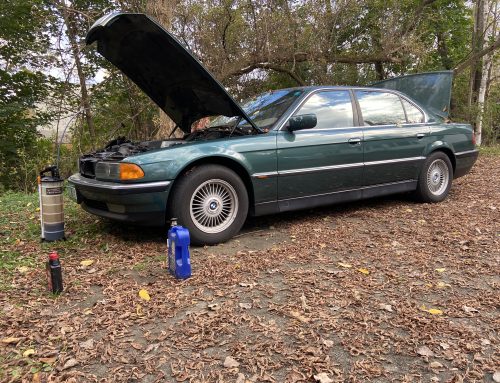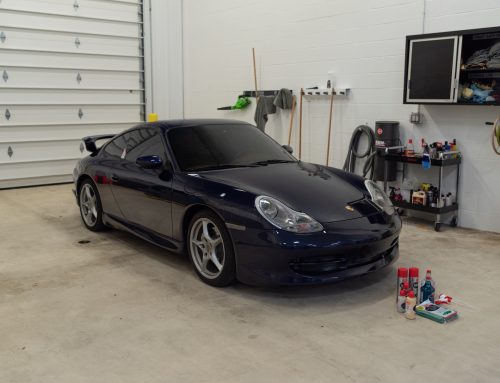Since March of 2020, we’ve seen extreme, generation-defining, events happen real-time back to back. Most recently, for the past fifty-three days and amidst an ongoing global pandemic, Ukraine is attempting to repel Russian invaders and millions of refugees have fled the country as a result. What this most recent global event, and the preceding line of crises before it, have shown us in this new decade is how incredibly connected and reliant on each other we all are. When we were observing stay at home orders, we saw drastic fluctuations in the price of goods and services, most of which went completely inverted to what analysts predicted. We saw supply chains grind to a halt and continue to struggle in the now almost post-pandemic climate, but we haven’t as a global community had the chance to catch our breath. An event that happens 3,000 miles away has a butterfly effect that causes waves in the form of prices at the grocery store, the gas pump, and the car market. This week, we’re going to be a bit more journalistic than we normally are, so strap in for some data-driven takes on what’s happening and what you can do to ride some of this out, especially if you’re faced with a decision to buy or sell a car right now.
We’re All Connected
What the pandemic showed us in the first months was how critical many of us, employees at the ground level, are to maintaining the functionality of society as we know it. Without truck drivers, store shelves empty quickly and have no means to replenish. With no one leaving their homes, restaurants that don’t offer delivery can’t function, and that’s if they’re able to maintain their staff. These are things we, collectively as a society, know now after the pandemic. Yet, despite the knowledge that many of these often considered ‘unskilled jobs’ effectively keep the entire machine of industry and economy rolling, we’re still seeing the highest inflation and most stagnant wages as a society that we’ve seen since the Great Depression, which has kept job turnover high and ‘now hiring’ signs prevalent across the country.
For some, this has proven lucrative as entrepreneurs identified needs they could fulfill, like companies who created QR scan codes. Many of these operations were one or two-man gigs performed part-time, or services offered under a blanket of services from a marketing firm. The widespread use of this not entirely new technology exploded that market, along with several other similar go-getters. But to everyone else, we were left with stimulus checks. Regardless of whether you were in the camp of crazy profits or white-knuckled stress over a nonexistent job market and that next rent check coming due, what we all came to understand was that most of what we as a society rely on to exist is, to the majority, unseen and expands vastly. The actions of people, companies, governments across the world have a direct and nearly immediate effect on our daily lives, be that money in the bank or food on the table.
What that connectivity has meant in real terms is that there are no sheltered, entirely self-sufficient, markets. Factories in Italy closing meant a huge backlog in exhaust orders for Supersprint, speaking in examples that hit close to home. Now, we’re seeing this same effect with the conflict in Ukraine as new vehicle production is stalled for many automakers both in parts shortages and suspension of operations in Russia.
How Ukraine and New Cars Fit In
During the pandemic, car prices rose drastically for both new and used vehicles. With plants closed in the East who produced microchips for many new vehicle manufacturers, new car deliveries stagnated and dealership lots shrank. Average used car prices climbed drastically, but curiously, so did enthusiast and collector cars. The going rate for an E36 M3, for example, happened to nearly double during 2020 and 2021. Of course, some of that is due to the age and popularity among Millennials like myself, as similar enthusiast collector cars from that age also gained in value. But still, it seems everything for sale is roughly 10-25% more expensive so long as it carries that ‘enthusiast’ desirability. More on that in a moment, for now, back to ‘average’ cars.
Average car prices, according to USA Today, are costing 40.5% more than last year. The pandemic restrictions that caused that initial hike have, in essence, been overcome. Yet, we’re still seeing extremely high prices. That, as you may be aware, is thanks in part to Russia’s invasion of Ukraine. Ukraine is a producer of wiring harnesses for many automakers, who, without these harnesses, cannot even begin to assemble vehicles to stage them while they wait for parts.
Some automakers have had to completely re-adjust after pulling their operations from Russia entirely. Paired with the continued parts shortages, new cars simply aren’t being delivered. Then, compounding with this issue, shipping the vehicles that can be delivered has been exponentially difficult in the year following pandemic restrictions. Shipping, coincidently, segues perfectly into the next point.
Trucks And Truck Drivers
More people shopping from home has meant more goods need to be shipped, often imported from overseas. That has led to crowding at the ports and slower than usual clearance through customs which ultimately translates to long wait times for truckers. If you follow John Oliver’s Last Week Tonight, you may have seen his recent take on trucker shortages. For those that haven’t, the primary issues are that long haul truckers are not paid for their idle time, like loading and unloading, and are highly restricted to when they can and can’t drive, regardless of conditions, by government regulation.
Currently, some shipping and trucking companies are seeing turnover as high as 300%. They’re replacing three drivers a year for the same position, meaning truckers aren’t willing to endure the restrictions and high costs with little to take home and show for their efforts. This ‘shortage’ of some 80,000 truckers is causing massive headaches for internal shipping in the US, which has, in part, affected that vehicle delivery.
All this is to say, parts aren’t available, truckers aren’t willing to work twice as hard for half as much, all our imports are piling up at the ports waiting to be delivered, and the new car shortage has caused a run on used cars, which has driven prices up across the board. This isn’t even beginning to mention the fuel costs as a result of an autocratic tyrant with a distorted view on reality.
But What If I Need A Car?
Well, that’s what we’re here to help with in the form of advice. Unfortunately, there isn’t much that can be done about any of these global crises, the rising costs of goods and services, or the fact that Dogecoin won’t turn around (come on boy, you can do it!) What we can do is help walk you through some of the things that may get you either into the car you need or rejuvenating the car you have to avoid paying inflated used car prices.
Buying a new or used car right now is going to be expensive. You need to ask yourself if you are willing to pay for something that is very likely not going to be worth what you paid by a wide margin in the extremely near future. If you’re on a tight budget and just looking to upgrade, our advice is to hold out and wait. If you’re in a position where you have to buy something and need it now, unfortunately, you’re going to pay a premium. But that doesn’t mean you have to get absolutely hosed, either. Plenty of ‘desirable’ cars have avoided much of this crazy inflation. Some that have maintained relatively sensible prices we’ve found here as examples:
But, given the option to keep what you have or get something new, the answer should at this time almost exclusively be keep your current daily. Sure, you may want some better equipment, need a little more space, or want something that doesn’t feel so beat-up, but you don’t have to give up 40% more money for a new-to-you car to get that. If you’re feeling a bit ready to make the change to a new ride but afraid of the high inflation hurting car buyers right now, here are a few suggestions:
Start with a clean slate

It doesn’t matter how much of a beater my car is, if it’s clean, it instantly feels better to me. Inside and out, a clean car regardless of it’s age or physical beauty, can be a completely different experience to drive than a filthy one. Some of my favorite at-home detailing products to make this happen on the cheap are Griot’s new hand-pump foam sprayer, their 3-in-1 high-foam shampoo, and their ceramic headlight restoration kit. For the interior, LIQUI MOLY offers an excellent interior detailer spray that won’t leave a residue while removing any surface contaminants and a leather rejuvenator that smells great and works incredibly well when reviving dry, worn-out, old leather. For the best results, I like to cut the bristles of a 1/4” paint brush down to about half length, spray that detailer, and go to town on all the nooks and crannies, then wipe down with a microfiber afterward.
Fix what’s bothering you

Many times, we take care of those big services like a cooling system refresh or suspension overhaul, but ignore the little things that bug you just about every time you drive. Things like the passenger window regulator that’s locked up or those dead pixels on your 20-year-old BMW head unit. Maybe a speaker is buzzing or your steering wheel is worn out and gross. Identifying all those little issues and tackling them usually aren’t super huge jobs or incredibly cost-intensive. Fixing three or four of those little problems will make your daily drives more enjoyable and your car won’t feel as much like it’s showing it’s age. A new head unit, like the VDO units or Bremmen Parts head units, offer modern functionality and can completely revive an aging dash layout. BAVSound speakers are better in quality than most original equipment and aren’t extremely costly. For the random tidbits, our Assembled by ECS catalog and Genuine OE parts catalogs have you covered.
Wheels and Coilovers

Even if you aren’t into the whole stance movement, changing up the wheel and suspension setup on any car drastically improves the look and feel of your car. It doesn’t matter what the car looks like, if it’s properly lowered and sitting on a set of wheels that work with the car, it can look incredible. What’s more, for the price of what you’d likely put down on a used car loan, you can certainly afford some quality coilovers and wheels. Our ECS coilovers are available for the majority of popular BMW, Audi, and Volkswagen models while Tekniform wheels and Alzor wheels offer enthusiast fitments and styles at entry-level price points.
Take Care Of Your Car, It Will Take Care Of You

Finally, if you have been neglecting major maintenances and that’s resulted in less than stellar commutes, we implore you to pick up the tools and get a little dirty rather than selling your car for what you can get and paying 40% mark-up on something used that may need similar work. Our Assembled by ECS service kits include everything you need for simple to extremely comprehensive maintenance overhauls and will help you revive your old car to make it feel like the one you had your eye on. Of course, many of these services do require some specialty tools. Fortunately, we have Schwaben OE specialty tools to help you complete these jobs correctly and ensure that our tools are affordable to any DIYer’s budget.
Final Thoughts
With global conflicts, an ongoing pandemic, a worker shortage, and backups all the way to the top of the supply chain, this inflation for new and used cars isn’t going to go anywhere anytime soon. If you’re looking to upgrade your daily, it’s almost certainly a better idea right now to stick with it and improve what you have rather than look for something new. At ECS, we’re here to help you do it.






this entire situation is leading up to the biblical mark of the beast. wether or not you like it, it’s going to happen.
the best thing to do is prepare yourself spiritually and have the strength to overcome what will happen.
GWGB
I have the same Pomelo Yellow Mk8, what are those wheels? They look great!
Theyre our Tekniform 007 in 19×8.5 ET45!